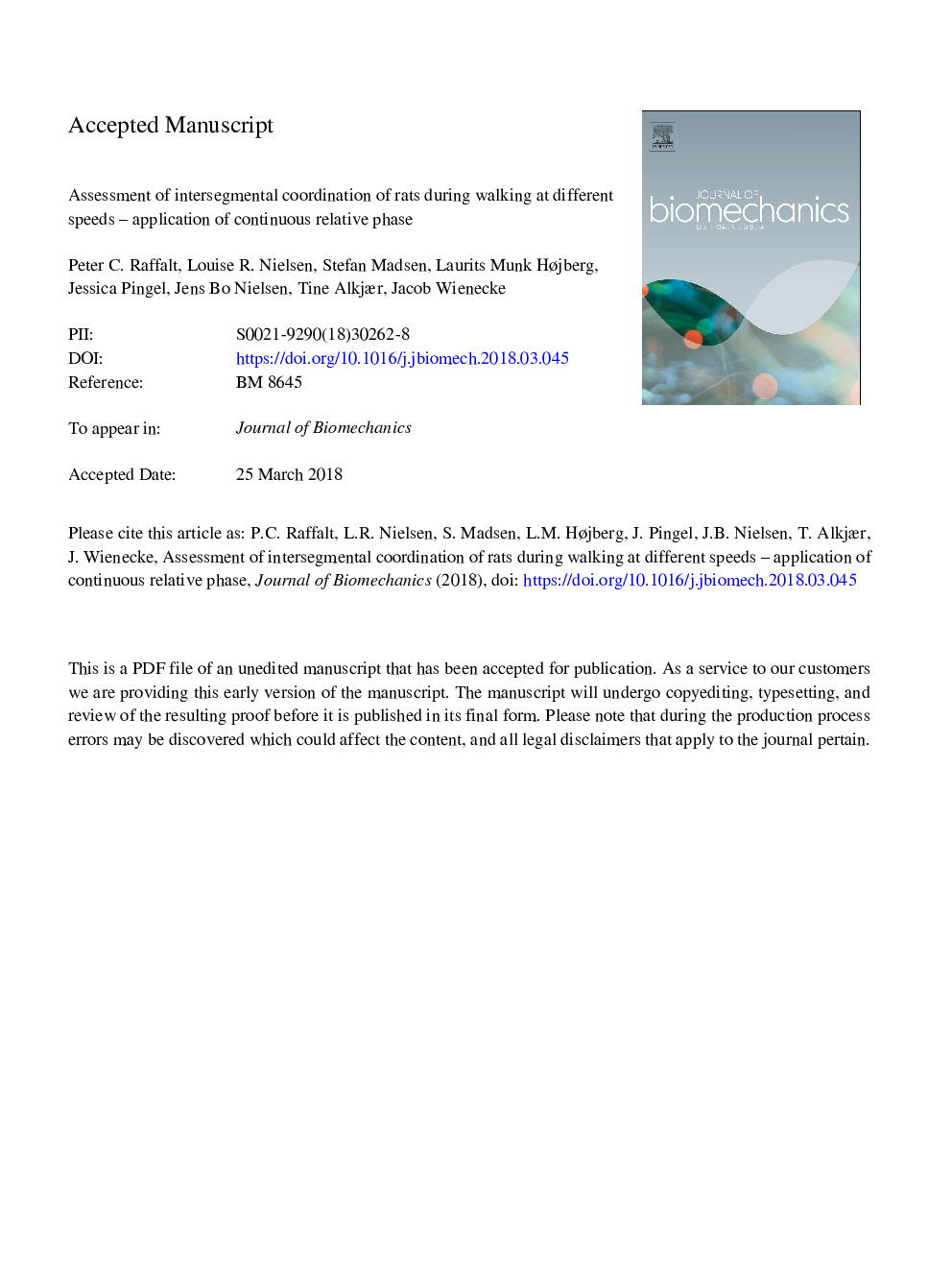| Article ID | Journal | Published Year | Pages | File Type |
|---|---|---|---|---|
| 7236175 | Journal of Biomechanics | 2018 | 26 Pages |
Abstract
The present study investigated the feasibility and reliability of continuous relative phase (CRP) and deviation phase (DP) to assess intersegmental hind limb coordination pattern and coordination variability in rats during walking. Twenty-six adult rats walked at 8â¯m/min, 12â¯m/min and 16â¯m/min while two-dimensional kinematics were recorded. Segment angles and segment angular velocities of the paw, shank and thigh on the left hind-limb were extracted from 15 strides and CRP was calculated for the paw-shank and shank-thigh coupling. The effect of walking speed on the time point average curve of the CRP (ACRP) and DP and on the mean ACRP and mean DP was established by statistical parametric mapping (SPM) and a one-way ANOVA for repeated measures. Absolute and relative reliability were assessed by measurement error and intra-class correlation coefficient. The SPM analysis revealed time dependent differences in the effect of speed. Thus, the CRP of the paw-shank coupling decreased with increasing speed during most of the gait cycle while the CRP of the shank-thigh coupling was decreased during the swing phase. The session-to-session reliability was fair to good for the coordination measure and poor for the variability measure.
Keywords
Related Topics
Physical Sciences and Engineering
Engineering
Biomedical Engineering
Authors
Peter C. Raffalt, Louise R. Nielsen, Stefan Madsen, Laurits Munk Højberg, Jessica Pingel, Jens Bo Nielsen, Tine Alkjær, Jacob Wienecke,
